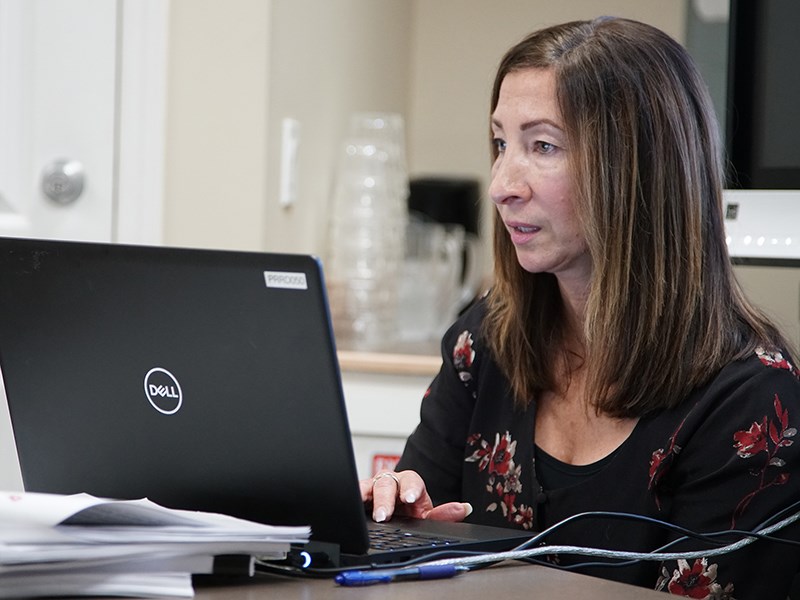qathet Regional District (qRD) directors were recently presented a near-final version of the 2021 to 2025 financial plan.
Manager of financial services Linda Greenan outlined the fourth draft of the plan at the March 17 finance committee meeting.
Greenan said the capital plan highlights show more than $10.6 million budgeted for regional capital projects. This involves waste management, with the site closure at the Marine Avenue former incinerator site and resource-recovery centre expenditure adding up to $6,565,206. The waste transfer station at the site is budgeted at $3,219,063. Electoral area capital expenditures will include $541,309 for Northside Volunteer Fire Department’s Lund satellite hall, and $138,975 for the fire training centre.
Greenan said this draft budget recommends a 3.2 per cent requisition increase. She highlighted the tax rate per $100,000 on net taxable value of a household, comparing the 2020 rate to the 2021 rate. In all areas but Lasqueti Island, the tax rate per $100,000 dropped.
“The biggest driver of that is because assessments have increased,” said Greenan.
According to a table Greenan provided, in City of Powell River, the tax rate per $100,000 of net taxable value is $72.35. In Electoral Area A it’s $342.85 per $100,000, on Savary Island it’s $193.22, in Area B it’s $228.06, in Area C it’s $236.40, in Area D it’s $230.64 and in Area E it’s $254.42.
Greenan then outlined the taxation cost for the average home in qRD. In 2020, the average home value was $345,103.69, while in 2021 it has risen to $374,642.03.
In the city, the taxation cost per average home in 2021 is $271.05, which is an increase of $15.33 over 2020.
In Electoral Area A, the cost per average home is $1,284.46, which is an increase of $64.97 over 2020.
On Savary Island, the cost per average home is $723.89, which is an increase of $50.07 over 2020.
In Electoral Area B, the cost per average home is $854.39, which is an increase of $62.72 over 2020.
In Electoral Area C, the cost per average home is $885.65, which is an increase of $61.80 over 2020.
In Electoral Area D, the cost per average home is $864.07, which is an increase of $40.25 over 2020.
In Electoral Area E, the cost per average home is $953.16, which is an increase of $79.29 over 2020.
Early start smooths process
Electoral Area B director Mark Gisborne said in the past, directors have started reviewing the financial plan in January and the process for this budget cycle was started in December of 2020.
“My question is: how did that help with workflow and the workload?” asked Gisborne. “How did that impact the finance department?”
Greenan said the change was significant.
“It was a much smoother process this year,” said Greenan. “We had much more time to actually check things before we presented them. Our goal would be to try to make this even earlier next year. I’m hoping we can get our first draft out in November.”
Electoral Area C director Clay Brander said he wanted to commend regional district staff on how they dealt with everything in stride in the budgetary process.
“It’s a good job facing hard situations,” said Brander.
Finance committee chair and city director George Doubt said the 3.2 per cent requisition increase as outlined in Greenan’s report is the entire regional district percentage requisition, not a tax rate, and it would be different again for each of the electoral areas because services are different and assessment changes are different, if he was correct.
Greenan said Doubt was correct.
“The 3.2 per cent is a requisition increase, so it’s basically the extra amount of dollars we’re collecting for the services, rather than a tax rate increase,” said Greenan.
Doubt said it’s nice to see the actual requisition is only being increased by a very reasonable amount, in his point of view.
“The impact on taxpayers is as light as it possibly could be,” said Doubt. “It’s good to see that. The tax rate change per $100,000 is a guideline, it’s not going to specifically be that I can calculate the value of my assessment and multiply it by the tax rate per $100,000 and expect my tax rate is going to be exactly that. There are other things that come into account, for example, differences and changes in assessment. There will be some differences but it’s a good guideline.”
The finance committee voted to receive the financial plan draft, and for staff to incorporate any changes carried at the finance committee meeting into the proposed financial plan. The committee also voted to recommend the board allocate any 2020 surpluses not scheduled to be brought forward for use in 2021 to the appropriate reserve fund.
Finally, the committee voted that the proposed financial plan be incorporated into a 2021-2025 financial plan bylaw to be presented to the March 25 regional board meeting for first reading through adoption.




